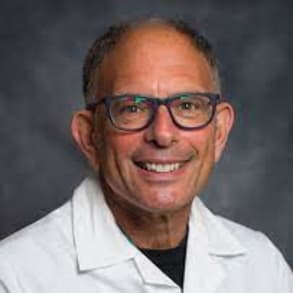Harlan Vingan, M.D., Interventional Radiologist at Medical Center Radiologist, discusses his area of focus, his path to medicine, and how the field of Interventional Radiology has developed over the years.
Good morning. My name is Harlan Vignon. I'm a interventional radiologist practicing with medical center radiologist, predominantly at Norfolk General Hospital. So as an interventional radiologist, we actually do a diverse number of things to take care of patients in multiple different organ systems in different clinical scenarios. Um, but most recently interventional radiology has developed a significant involvement with oncology, and my interest has been shifted toward mostly taken care of cancer through minimally invasive means using interventional radiologic techniques. So it's interesting interventional radiology when I first started, which was a long time ago, was in its burgeoning stages. It didn't really exist now. There's actually a formal interventional radiology um specialty supported by the board of A C G. M. E. But where I worked in Brooklyn when I went to medical school, we had one of the very early interventional radiologists in a policeman in this day and age of policing. Got shot in the neck and one of the initial embolization procedures to treat blood vessels. Patient came in the police, the Fire Department and the message. We're pressing on his carotid artery to prevent them from bleeding out. The interventional radiologist went in there did what we call an embolization procedure to stop the bleeding and saved his life. I was exposed to interventional radiology late in my medical school training, but initially was planning on going into internal medicine. But as soon as I got involved with some of the interventional radiologists, our facility, it was almost immediate that I said, that's what I need to do. So interventional radiology has developed a lot since I started in. The most important change was the development of an outpatient clinical practice where we can actually meet the patients in advance, discuss them with them. The procedures that were planning on doing what we're gonna do, why we're gonna do it, how it's going to help them and then after the procedures are done, follow them in the longitudinal manner. So that's something that's come about in the last 10 years and has changed completely the role of interventional radiology and the management of patients. We become true longitudinal care physicians. The other thing that's most important with our specialty is the multidisciplinary approach to patient care. We very very rarely will make decisions without invoking the patient's primary care physicians or their sub specialists that are referring them for care. So it's a multidisciplinary practice with a focus on longitudinal care. I think there are a lot of things evolving in the field of medicine, one of which is the integration of some of the techniques that we as interventional radiologists used to treat cancer and some of the new things that are coming along in the medical oncology field. So when we first started doing cancer therapy we were pushing the term io interventional oncology. But subsequent to that, the medical oncology field developed development of a lot of new drugs in the immunological oncology world. And they've actually taken over the word, the letter I. O. So it becomes confusing, but now in this day and age the integration of interventional oncology and interventional. I'm sorry, immuno oncology is actually a very hot research topic that hopefully we can start using both of these modalities two overall improve the care and outcomes of these patients. So basically when I started with Medical Center radiology, which is over 30 years ago, it was a different scent era. It was a much smaller hospital system and the beauty of it was, it was to me the combination of a local smaller hospital system that was caring for the community and the medical school that represented, you know, ongoing teaching and the ability to actually come here, develop an interventional practice as well as teach residents in in in kind of a sort of pseudo academic. I use the word pseudo, it's an academic setting, but it's not a major medical center, which is a great advantage. So you get the combination of a community based program in a very nice area with the ability to, you know, more fit with resident training. We have a specialized resident and interventional radiology. Now, it gives you kind of the best of both worlds.
Related Presenters
